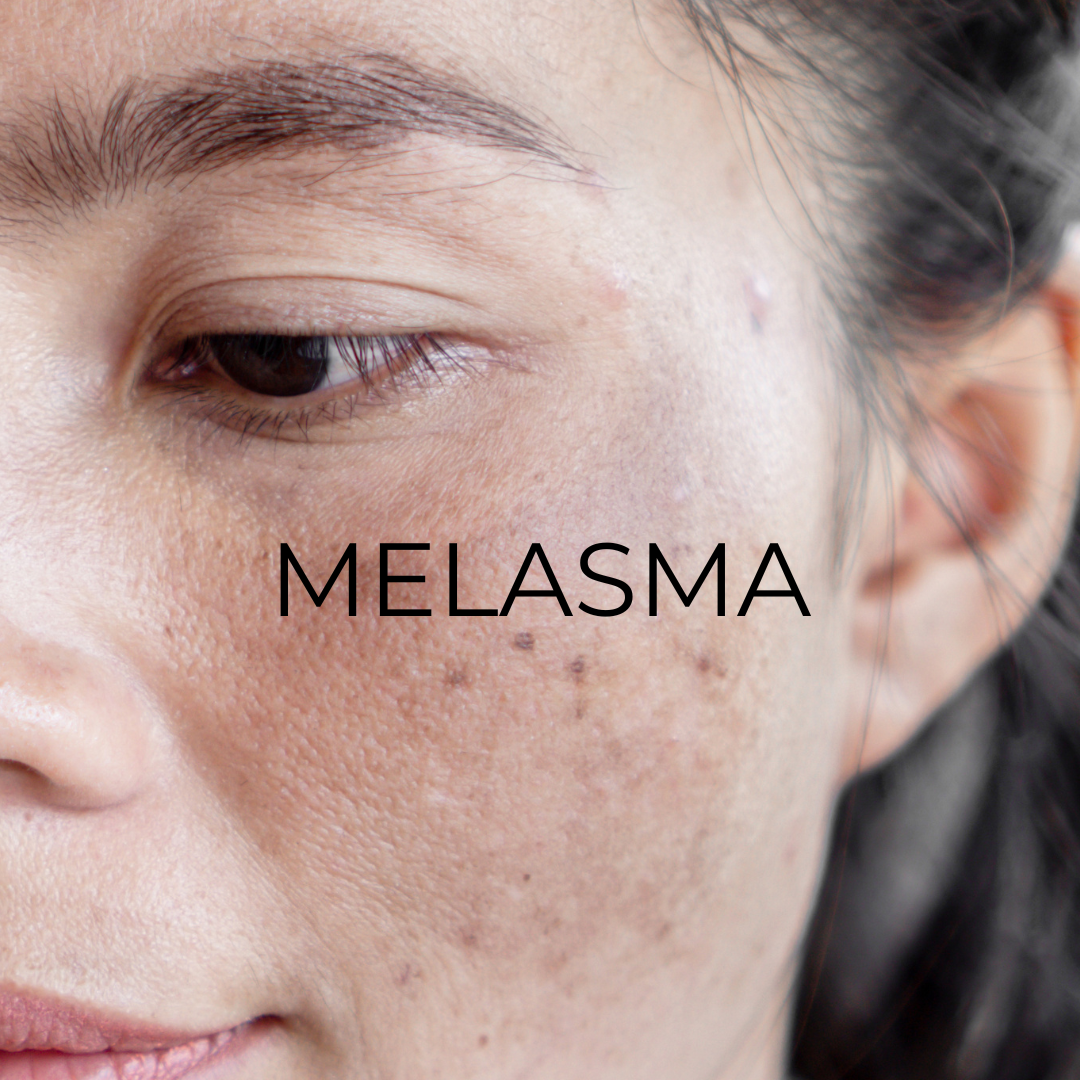
Melasma: where does the condition come from, and what you can do about to reduce it
Share
Melasma, a complex dermatological condition, arises from a multitude of interconnected factors. Understanding its formation requires delving into the intricate workings of skin biology and the interplay of various triggers. Here's a closer look at how melasma forms, its root causes, manifestation, exacerbating factors, as well as effective mitigation and prevention strategies:
Root Causes of Melasma:
Genetic Predisposition: Genetic factors play a significant role in melasma susceptibility. Individuals with a family history of the condition are more likely to develop it themselves, indicating a genetic component in its etiology.
Hormonal Fluctuations: Hormones, particularly estrogen and progesterone, influence melanocyte activity. During pregnancy or while taking hormonal contraceptives, elevated hormone levels stimulate melanocytes to produce excess melanin, leading to hyperpigmentation.
UV Radiation Exposure: Ultraviolet (UV) radiation is a well-established trigger for melasma. UV rays penetrate the skin, stimulating melanocyte activity and exacerbating existing hyperpigmentation. Moreover, UV exposure can lead to the formation of free radicals, contributing to oxidative stress and further melanin production.
Manifestation and Aggravating Factors:
Symmetrical Patches: Melasma typically manifests as symmetrical, hyperpigmented patches on sun-exposed areas of the face, such as the cheeks, forehead, nose, and upper lip.
Sun Exposure: Sun exposure exacerbates melasma by triggering melanin production. UV radiation stimulates melanocytes to produce more melanin, leading to darkening of existing patches and the development of new ones.
Hormonal Changes: Pregnancy, hormonal contraceptives, and hormone replacement therapy can all precipitate melasma due to their influence on hormone levels and melanocyte activity.
Decreasing Melasma:
Topical Treatments: Vitamin C, azelaic acid, retinol, and kojic acid are commonly used topical agents that inhibit melanin production and promote skin cell turnover, leading to a reduction in hyperpigmentation.
Procedures: Chemical peels, microdermabrasion, and laser therapy can help lighten existing pigmentation and even out skin tone by targeting melanin-rich areas and stimulating collagen production.
Preventing Melasma Recurrence:
Sun Avoidance: seeking shade, wearing protective clothing, and using hats and sunglasses can minimize UV radiation exposure and prevent melasma recurrence.
Hormonal Management: Discussing alternative contraceptive methods with a healthcare provider and avoiding hormone replacement therapy if prone to melasma can help prevent hormonal fluctuations that trigger hyperpigmentation.
Skincare Regimen: Adopting a skincare routine tailored to one's skin type, avoiding harsh products, and incorporating antioxidants and skin-lightening agents can support long-term management and reduce the likelihood of melasma reappearing.
Services and products:
Book one a series of 3-5 of these two services with a Mr. Lulu provider near you.

Use this system at home:


